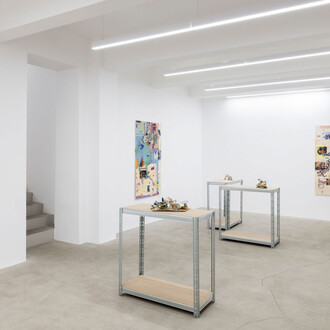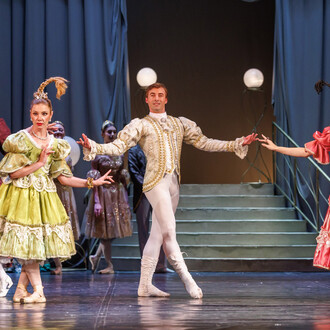Very well known internationally, Maïmouna Guerresi is one of the protagonists at the current Lagos Photo Festival, as well as being included in the Modest Fashion collective at the Stedelijk Museum Schiedam. Invited to exhibit in prestigious museums, such as the LACMA Museum in Los Angeles, Institute du Monde Arabe IMA and the Cultural Institute of Islam ICI in Paris, the KIASMA Museum of Contemporary Art in Helsinki, the National Museum of Sharjah, the National Museum of Bamako and the MACAAL Museum in Marrakech, her works also feature in major public collections, such as at the Smithsonian African Art Museum in Washington, the LACMA Museum in Los Angeles and the MIA Minneapolis Institute of Art.
As a multifaceted artist with an incisive poetic force, Maïmouna Guerresi constantly engages with current issues such as identity and multiculturalism, creating an allusive dialogue between European and African culture. Mixing personal themes with testimonies from the real world, she explores the manifold variety of stylistic languages – from video to installation, from photography to sculpture – by tracing a narrative path that finds its primary motivation in the exaltation of spirituality. In experimenting with a universal humanity, in which harmony between different cultures and faiths takes the place of fear and deaf negation, the artist achieves an expressive boldness full of seductive symbolism and aesthetic contemplation.
The exhibition in Milan, entitled RÛH / SOUL, traces the distinctive traits of her vast artistic career, focusing on a hybrid lexical register, a combination of mystical references, cultural metaphors and thaumaturgical influences. The choice of the title itself – the Arabic rûh means "inner spirit" – contextualises a narrative approach that absorbs a marked contemplative sensitivity, which has always been a thread in the poetic synthesis of Maïmouna Guerresi. In the urgency of internalising and then revealing the artistic message, the symbolism of the body becomes an allegory of the inner dimension: the body as a meeting place for different faiths, as a manifestation of human strength, and as the sacred locus for transformation into continuous becoming. Gesture, choice of colour, of clothes and scenarios build an instant immortalised in its complex elaboration, an instant that gives the characters in the shots an almost ethereal monumentality, suspended between reality and transcendence.
The juxtaposition of object, its use and its cultural meaning has always been essential in the visionary world of the artist, and it is deeply connected to references of the Sufi belief, a specific Muslim practice with a mystical and ascetic character that places the human being at the centre of the universe, in direct relationship with the divine. This search for intimate dialogue with the divine asserts the importance of natural elements, such as the symbolism of the tree or branch, which become a metaphysical bridge between heaven and earth; but it also surprises us with its use of swings, trampolines or air-filled bags, metaphors for a process of suspension, for a lifting off from the ground. The artist projects her own cultural storyline onto the absoluteness of the constant transition between earthly energy and interior contemplation, a storyline that develops its own legitimacy upon the evolutionary concept of human vulnerability.
Maïmouna Guerresi was born in Vicenza (Italy) in 1951. She currently lives and works between Italy and Senegal. She has numerous participations to her credit, both in important international museums, such as the Stedelijk Museum Schiedam, the Smithsonian African Art Museum in Washington, the KIASMA Museum of Contemporary Art in Helsinki, the MACAAL Museum in Marrakech, the Cultural Institute of Islam ICI in Paris, the National Museum of Sharjah and the National Museum of Bamako; as well as in festivals and biennials, such as the Venice Biennale, Documenta, Les Rencontres de Bamako, the Dak'Art Biennial, Manifesta, 13th Cairo Biennale and the International Festival of Photography of Bangladesh. Her works also feature in major public collections, such as at the Smithsonian African Art Museum in Washington, the LACMA Museum in Los Angeles and the MIA Minneapolis Institute of Art.
















